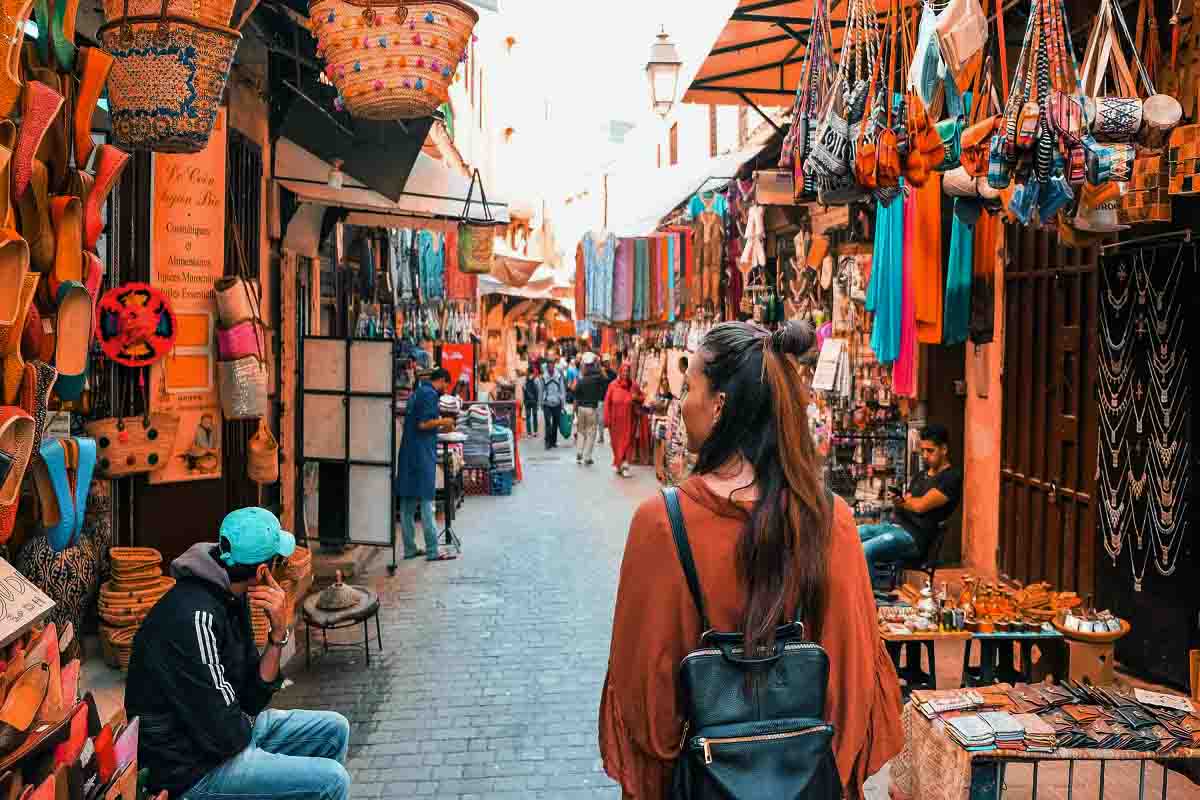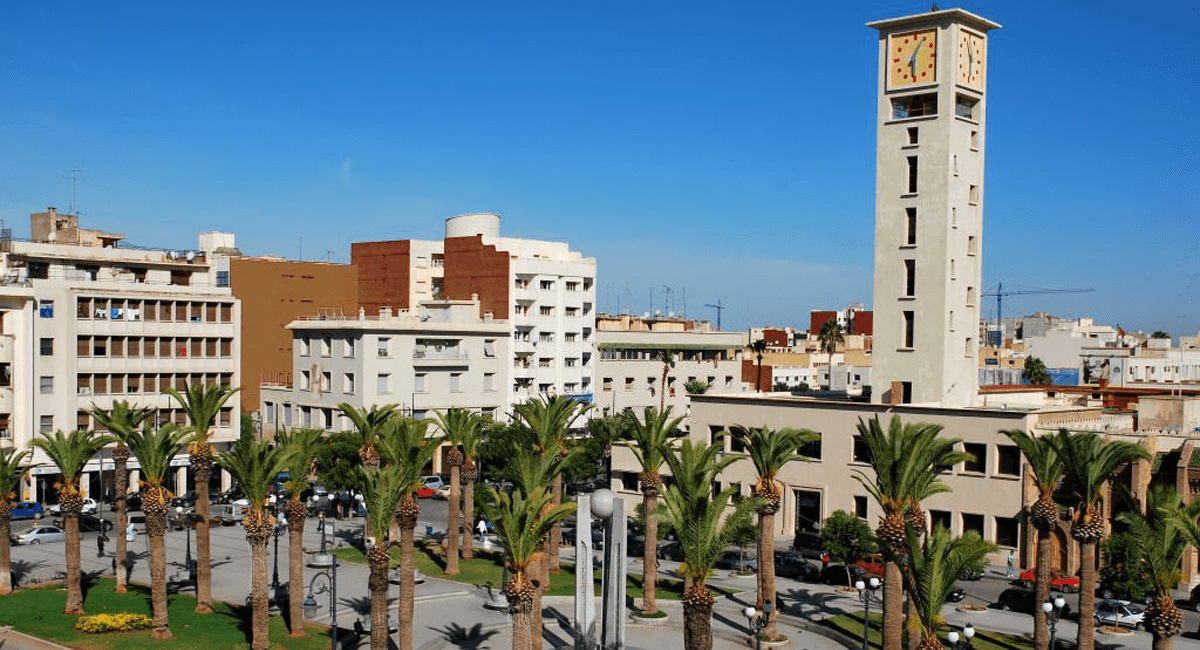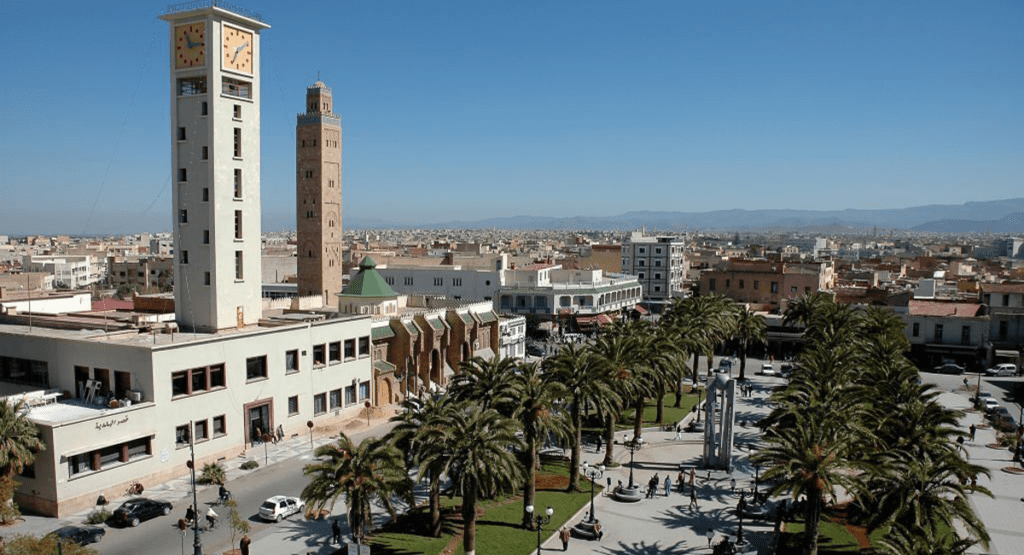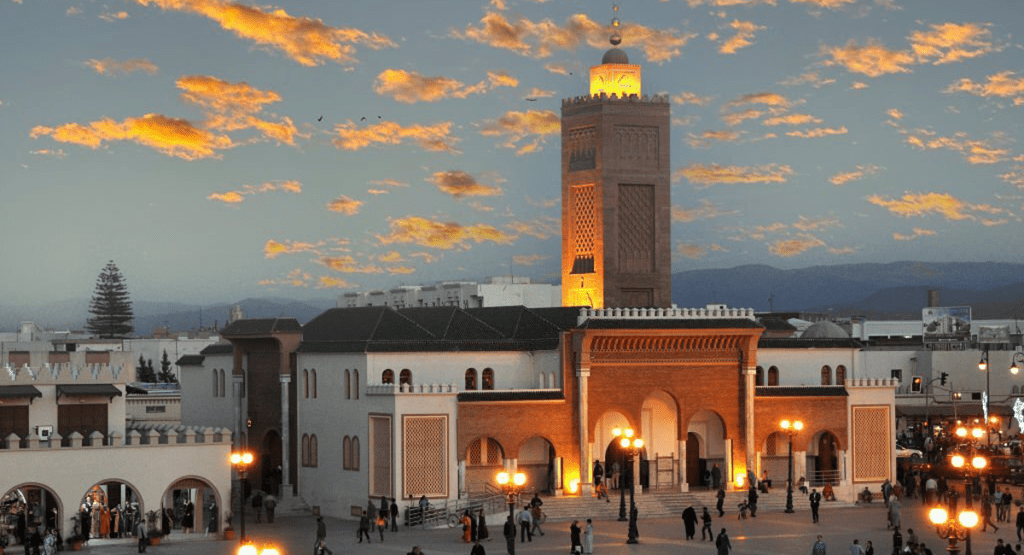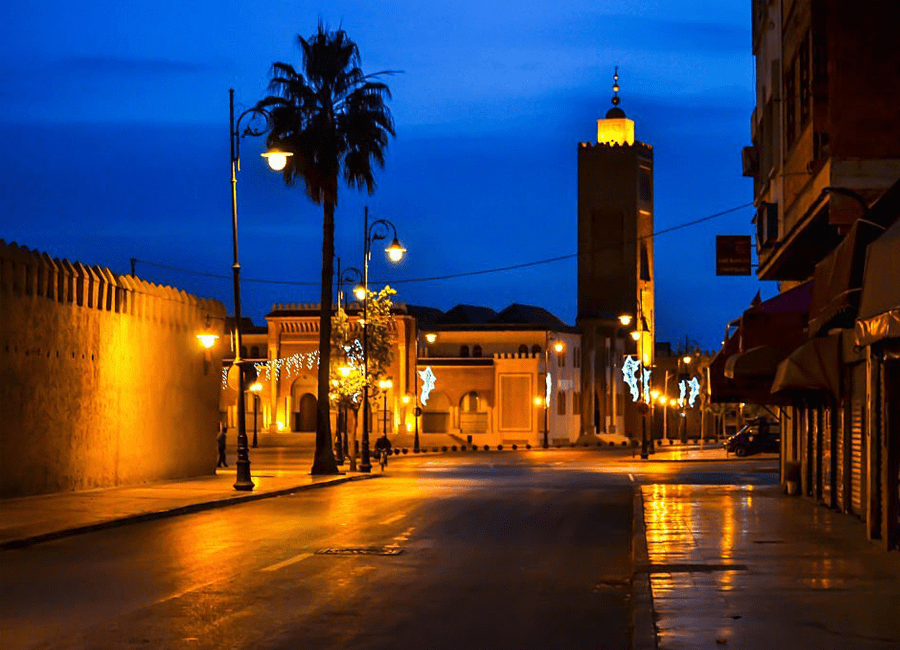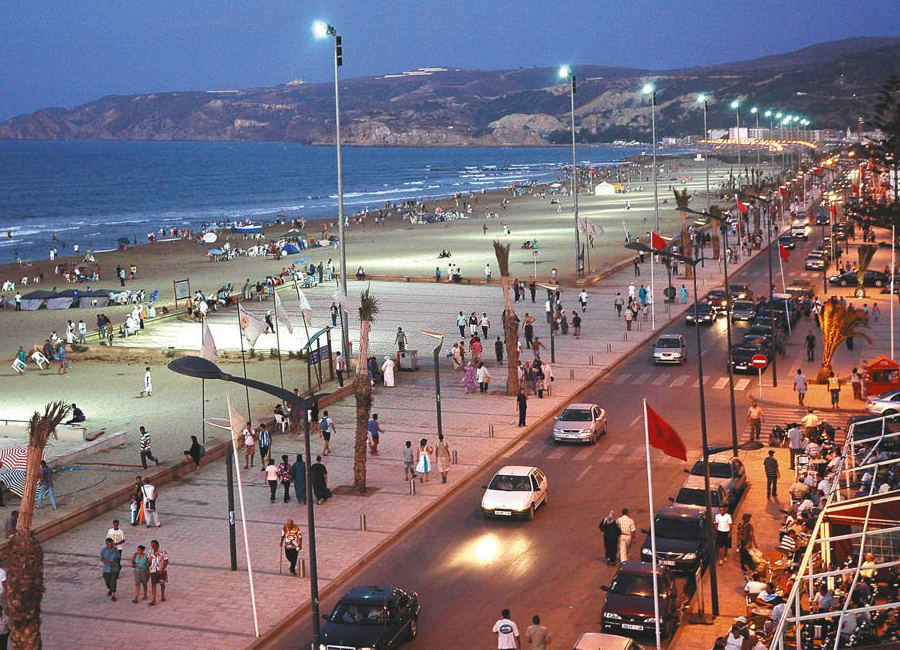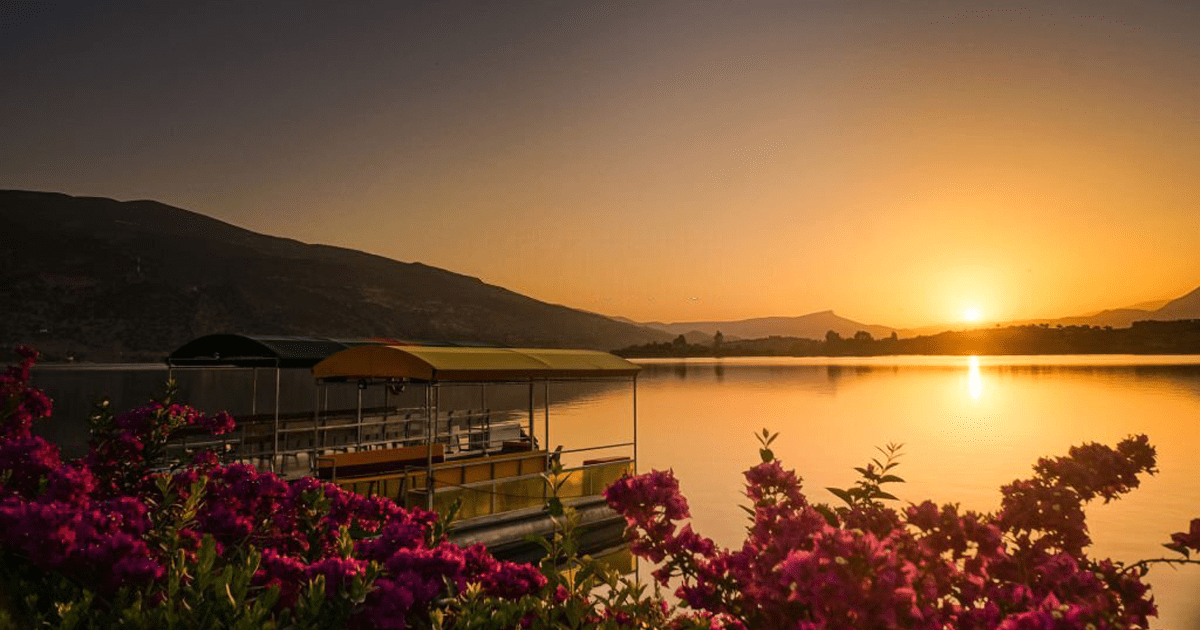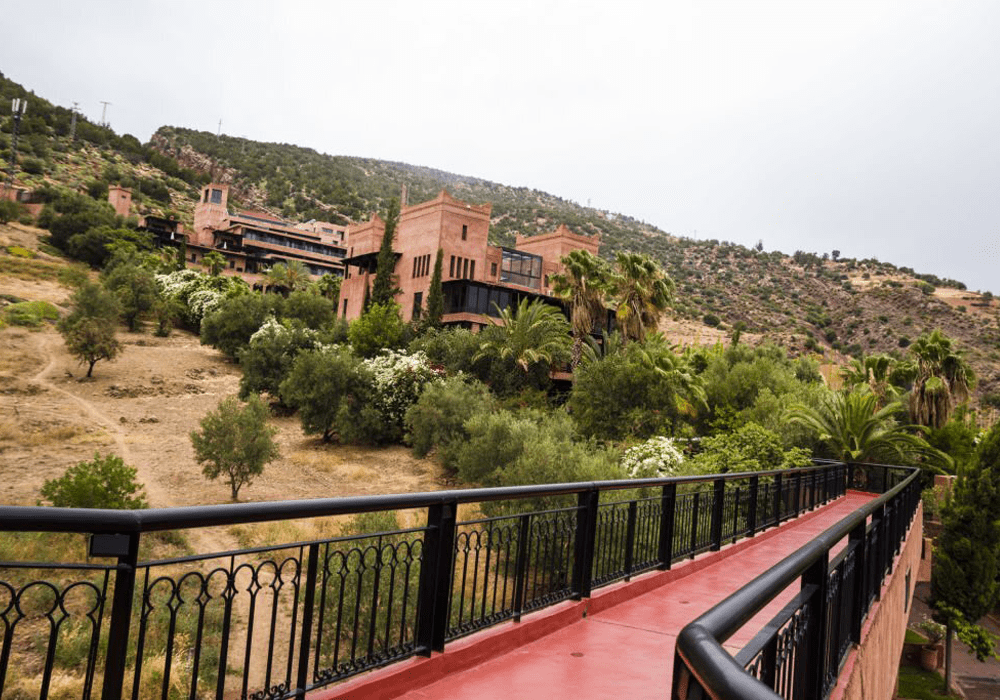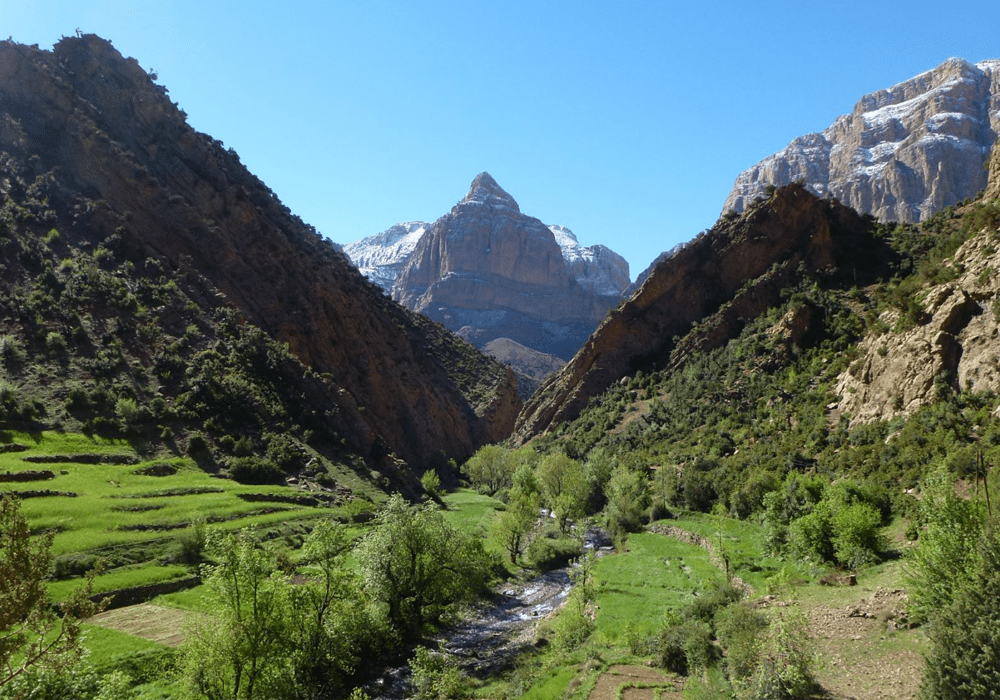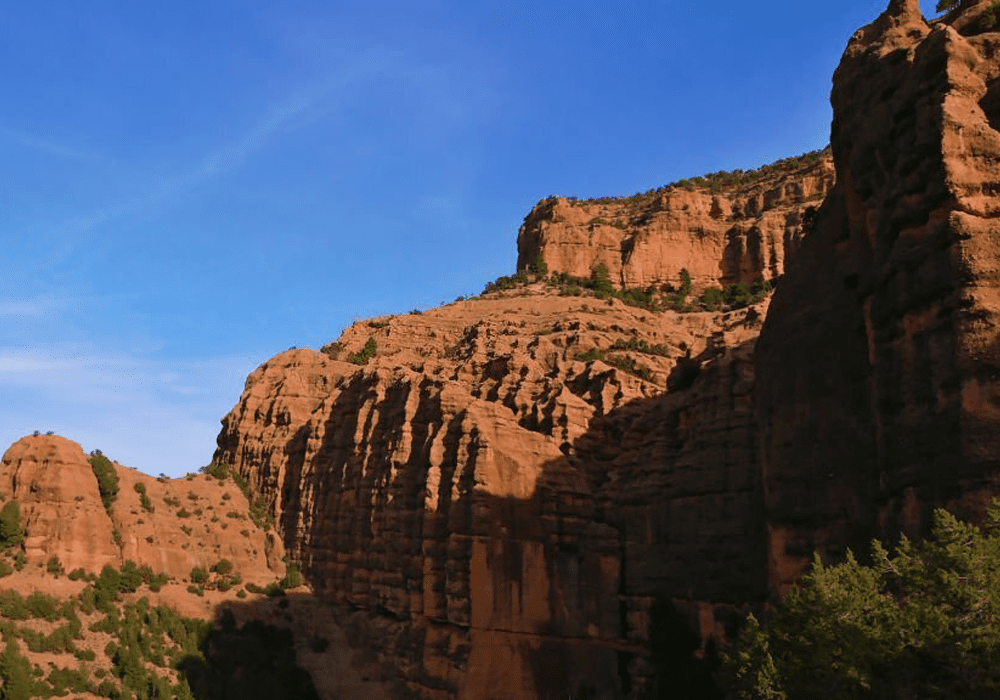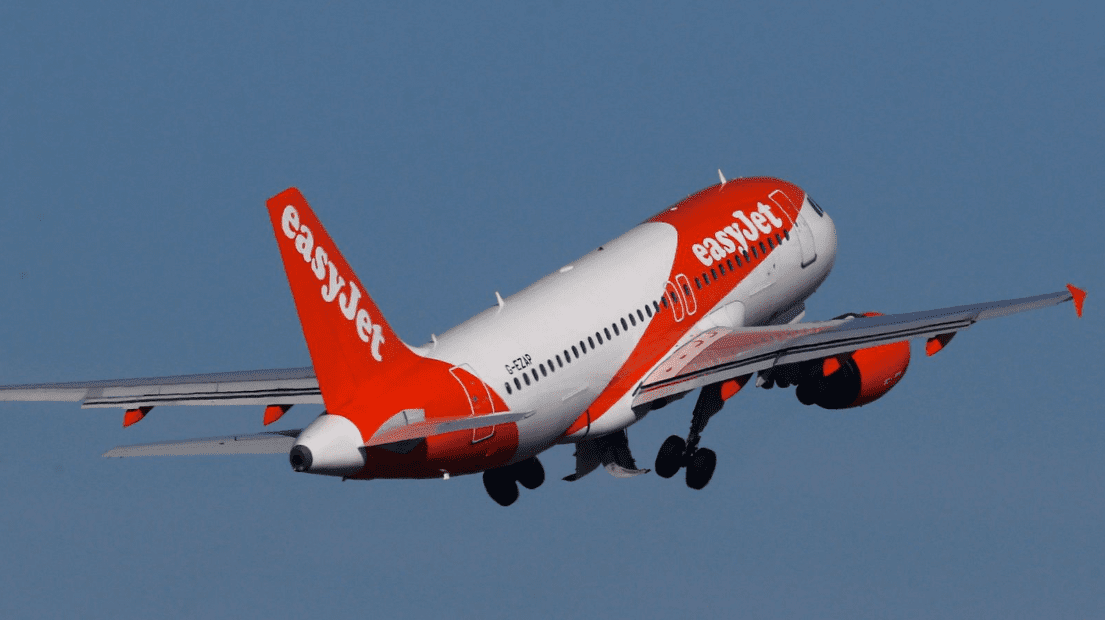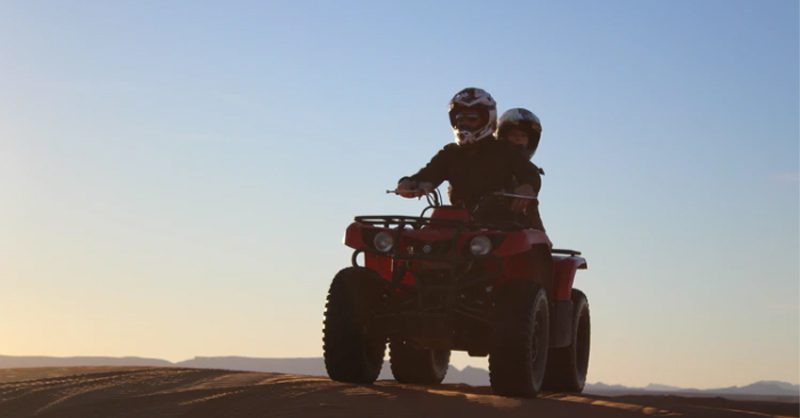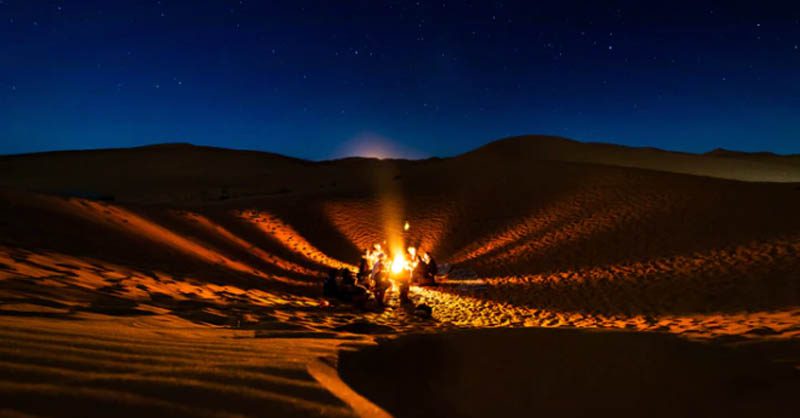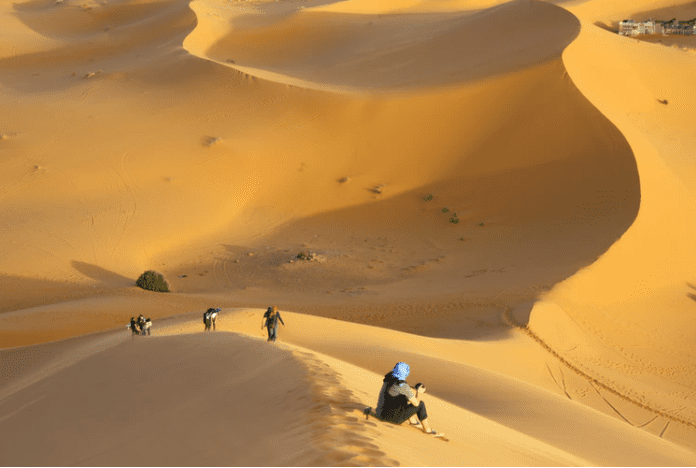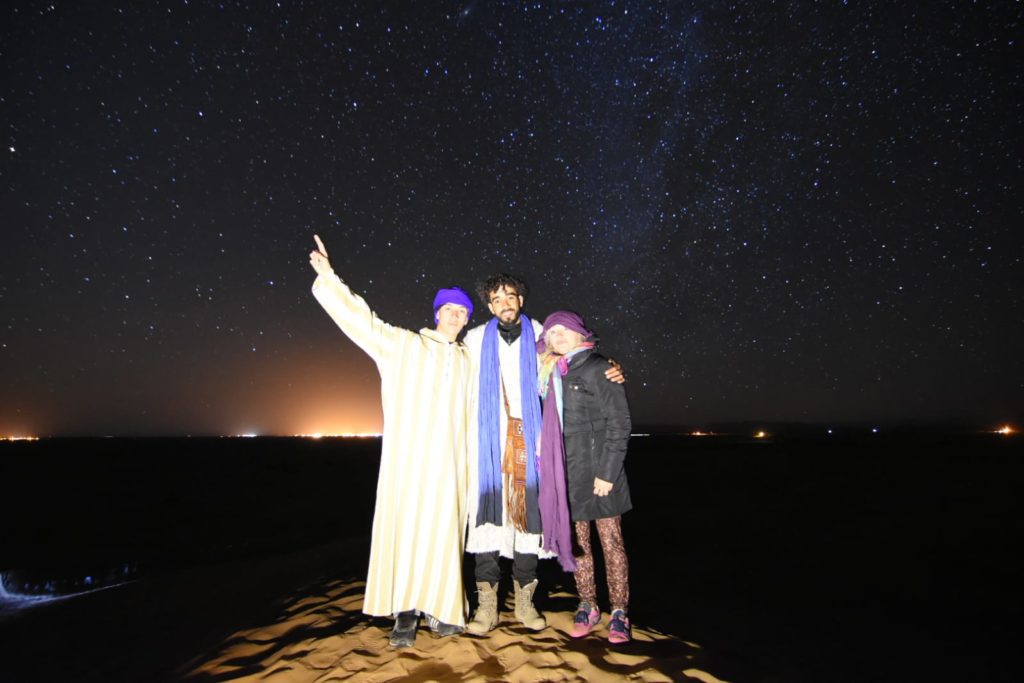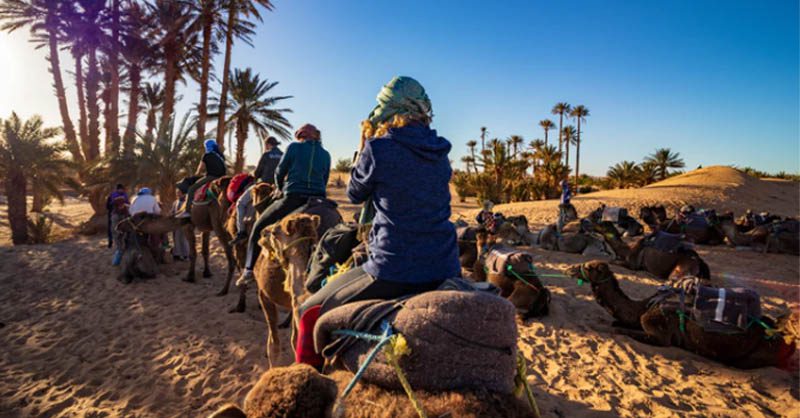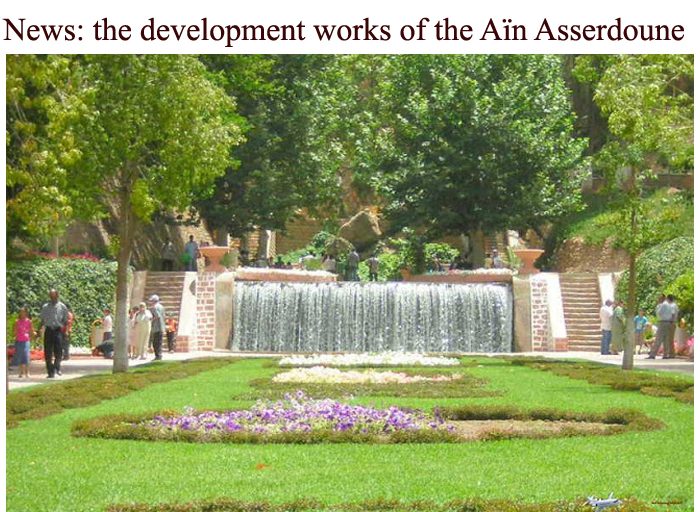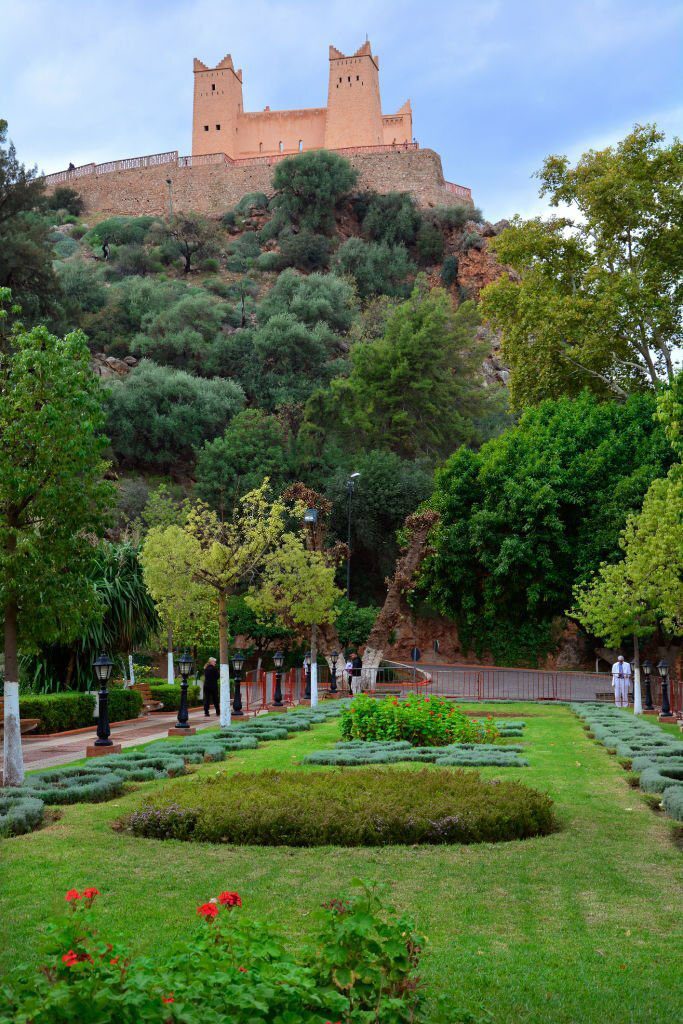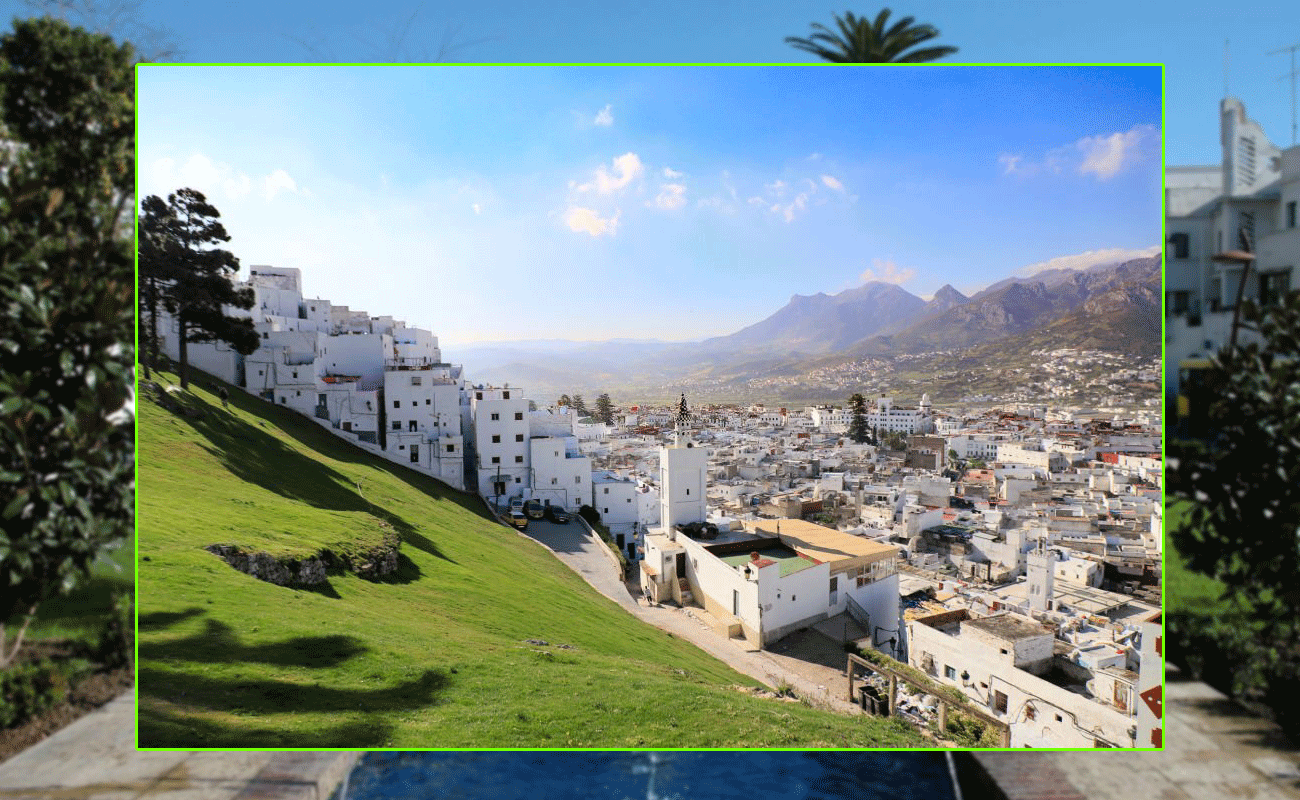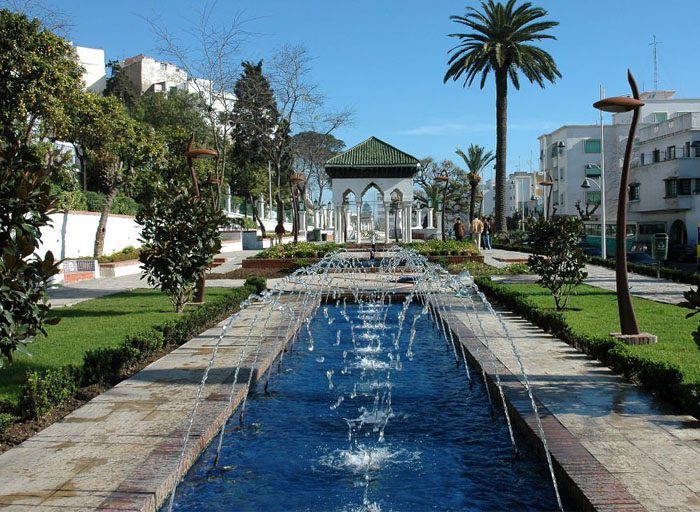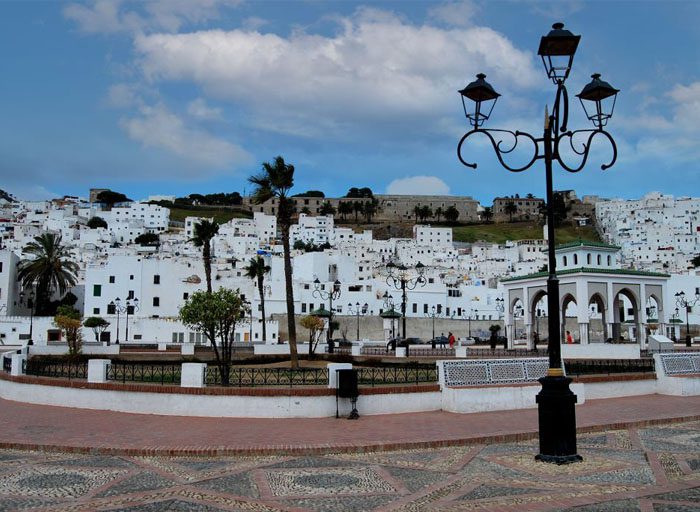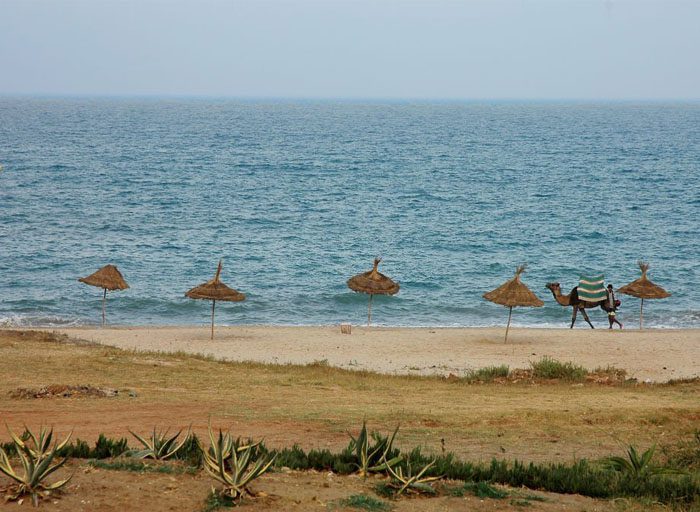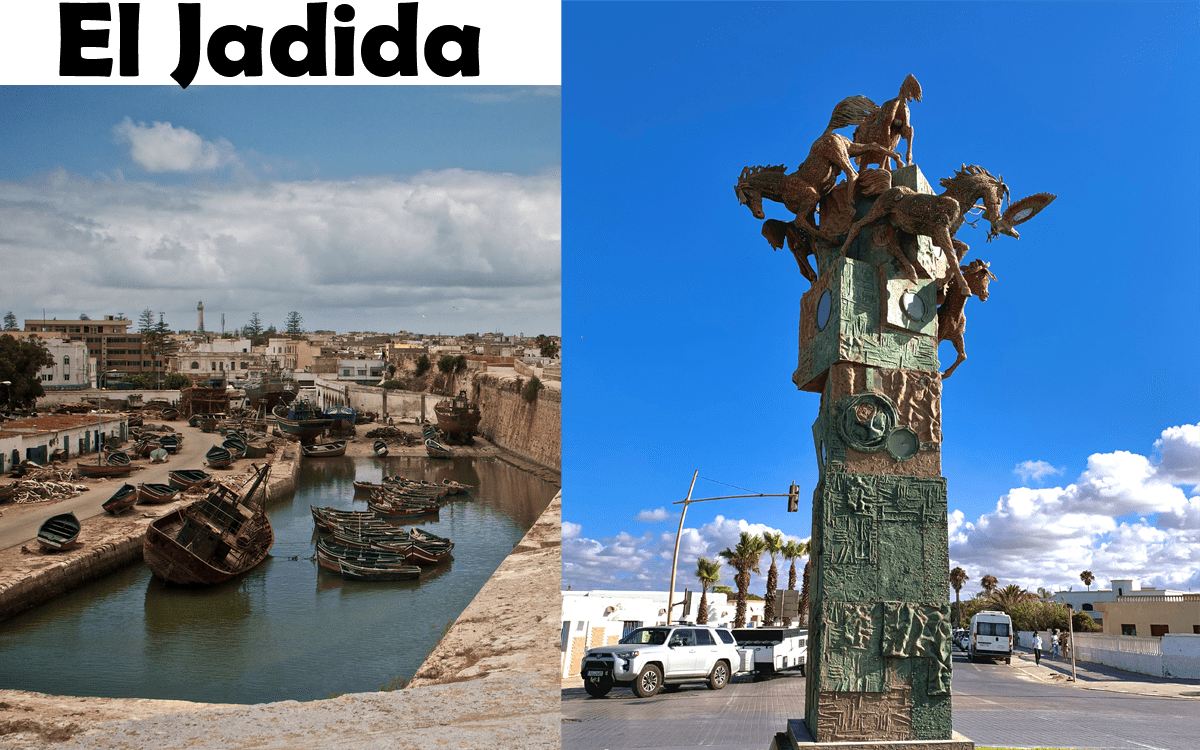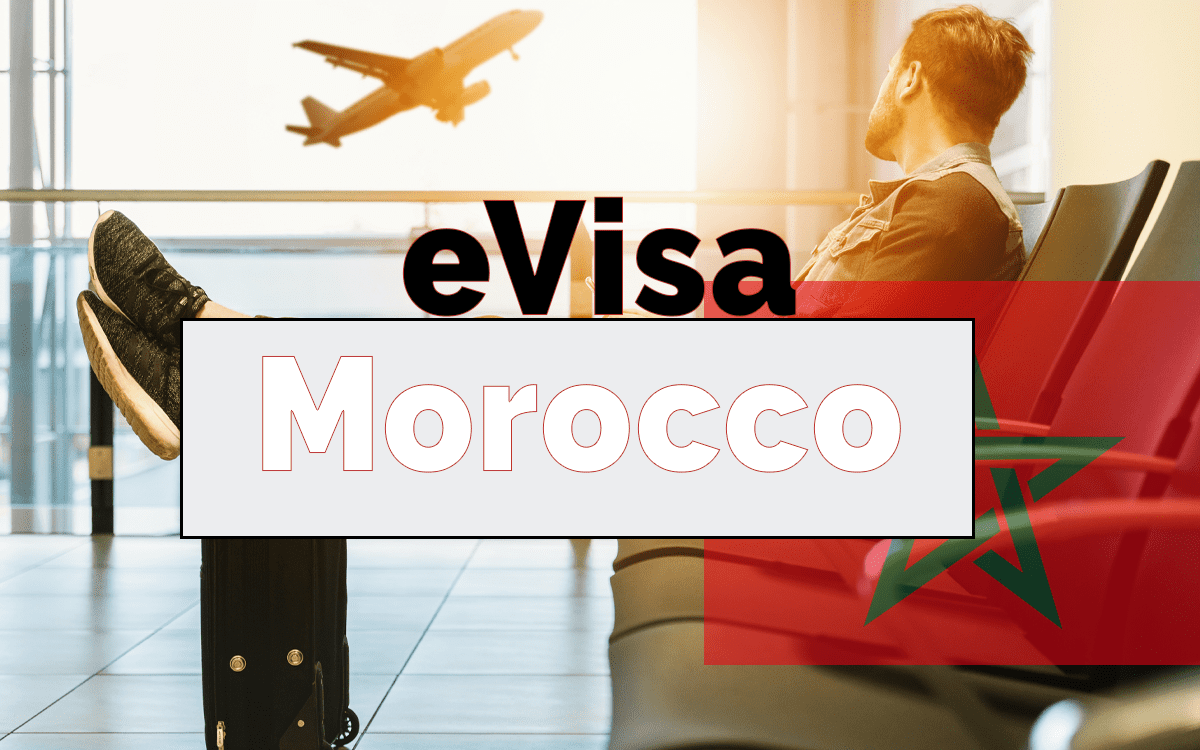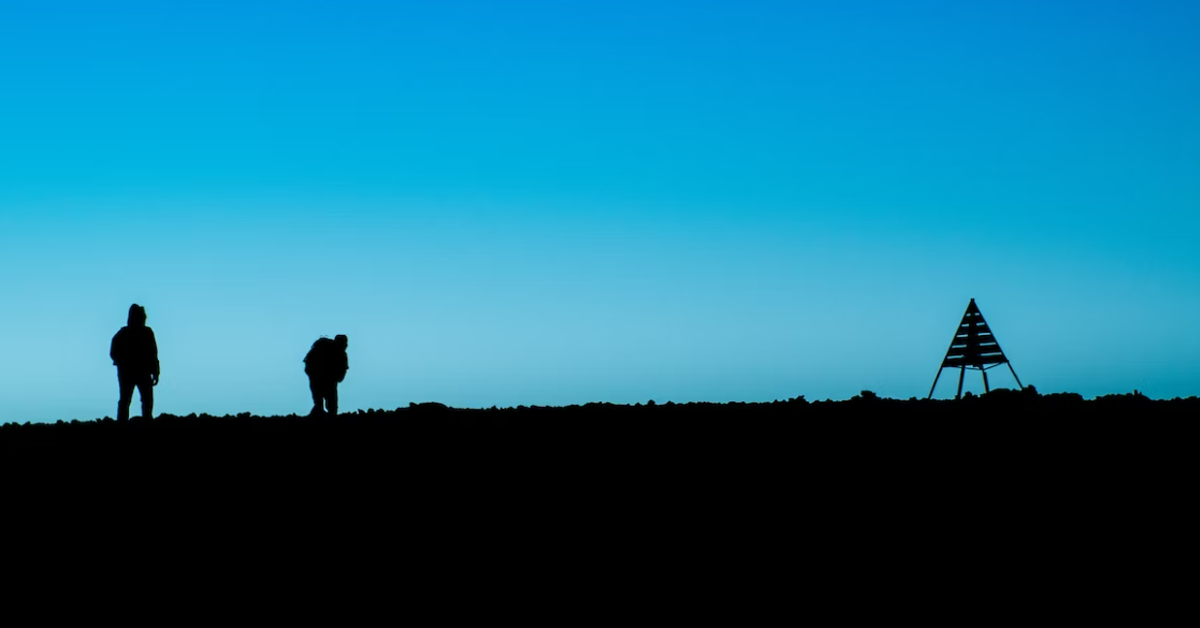
Moroccan Tourism
The Best Hikes in Morocco For Trekkers
The Best Hikes in Morocco For Trekkers
Share
The best Mountain treks that will take your breath away in Morocco
Everywhere blue, everywhere beautiful, with in places clouds as big as balloons and just below fields of wriggling wheat, rolling dunes and sunsets to redraw sheep.
In the Moroccan Atlas Mountains which cross the country on a south-west / north-east axis, there is no souk, no imperial cities or endless haggling. Rather melee with a dominating nature of insolent beauty. A great desire to live, in a wonderful land of hiking!
1. Toubkal, the highest point in North Africa
“There exists, at the limits of the known world, a fabulous mountain, narrow, perfectly round and so high, it is said, that its summit, always in the clouds, remains invisible: the people of the country say that it is the column of the Sky » Herodotus of Halicarnassus (5th century BC), the father of history, called this mountain the Atlas.
Atlas, the eponymous mythological titan who, defeated by the gods, was condemned to carry the celestial vault on his shoulders after Perseus, having presented him with the head of Medusa, had changed it into a rock… thus giving rise to the mountain range which crosses the Maghreb.
And it’s true that when climbing Toubkal, the highest point in North Africa with 4,167 m, there is something to be dumbfounded! However, if the ascent of this “4000” is not the most technical, it is nonetheless subject to the risks inherent in the weather conditions characteristic of the high mountains.
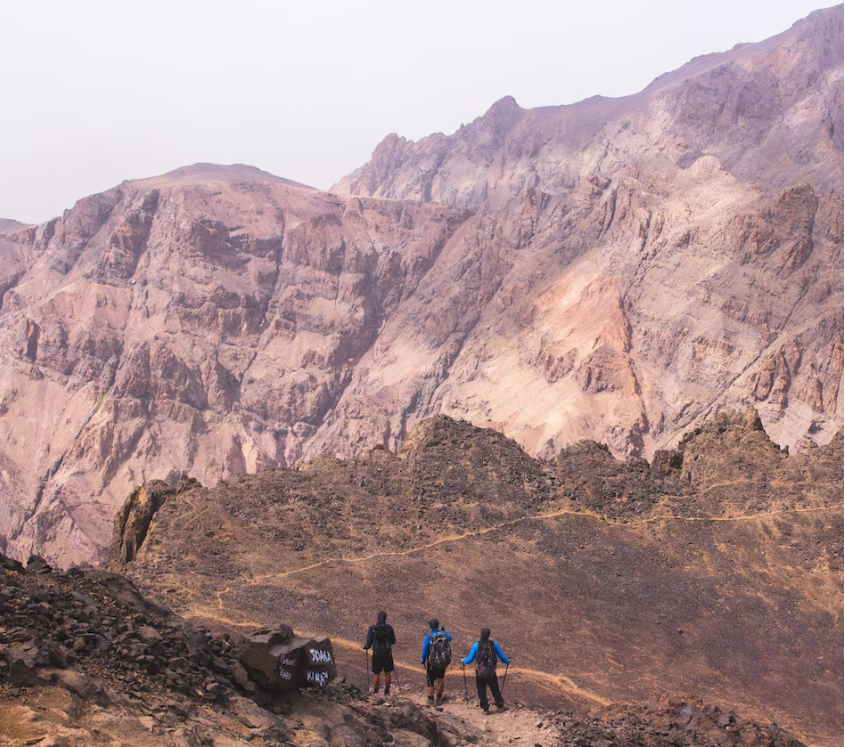
Imlil (1,740 m), a Berber village located about sixty kilometers south of Marrakech (departure by grand taxi from Bab Agnaou), is the starting point for the hike. This is where you find guides and muleteers. The village also has several hostels and homestays. You can find the additional equipment you need from local guides: shoes, snowshoes (if necessary), jackets, “fleece” type sleeping bag, etc.
Landing in Imlil a day before the ascent to ask your innkeeper about a good guide and renting equipment in good condition is not a luxury and often guarantees the success of the expedition.
The ascent starts from the refuge built by the French Alpine Club of Casablanca in 1938, which is reached after a 6-hour walk from Imlil. A gîte (to be booked in advance) that you reach from Imlil after a good half-day hike. On the spot it is often the effervescence, between mountain cracks and tourists impatient to do battle with Sidi Chamharouch, the king of the jinns who watches over the Toubkal.
You don’t sleep much there, you might as well know it, the main thing being to be there to start the ascent from potron-twink the next day. From there, allow about 12 hours to complete the ascent and return to Imlil before dark… if the weather conditions are good, of course.
Short of breath, wind stinging the face, the column of walkers sets off “at the front” in the dark, with just above a veritable carpet of stars. After 4 hours of effort, the summit is reached.
The high mountains are never quite a walk in the park. An experienced and qualified guide, therefore attention is necessary. Always take the trouble to ask about your guide. Otherwise go through an agency and remember that in Morocco no one will pick you up by helicopter if you are in difficulty.
2. The crossing of the central High Atlas
The western High Atlas which dominates the plain of Haouz where the city of Marrakesh is nestled, succeeds to the east the central High Atlas.
If the first is richer in “4000” and also more tortuous, with its deep valleys and steep walls of intense black, the second is mainly limestone, offering longer valleys, desolate high plateaus cut by deep gorges and many passes offering clear horizons.
Many trekking agencies organize the crossing from north to south (or vice versa), at the height of Mount Mgoun (4,068 m) in 5 or 6 days (depending on whether you climb Mgoun or not). Most of them depart from the famous Aït Bougmez valley, which tourist agencies have dubbed “the happy valley” on their glossy brochures. The latter provide you with a guide-cook and a muleteer, as luggage is carried by mules.
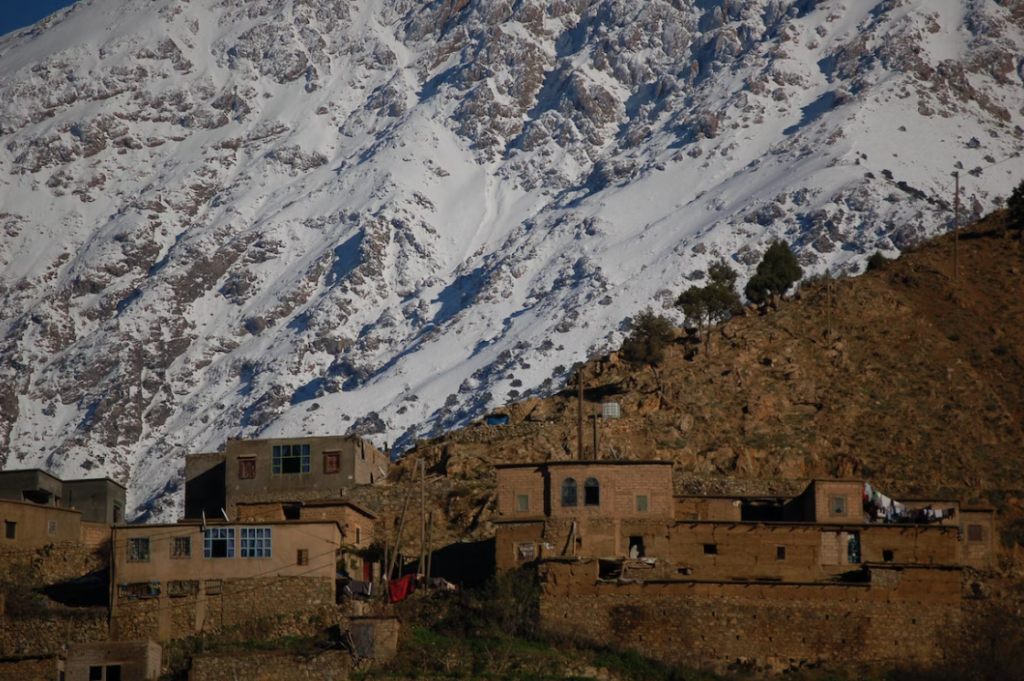
During this type of crossing, accommodation is basic. The meals (often quite frugal) are concocted with the food taken from the start. The main thing here is to eat the landscape …
During the crossing, no particular difficulty for those who have taken care to “pack” their hiking boots beforehand. However, steep drops are to be expected, so better be in good shape. But rest assured, the panorama and the encounter with the Aït Atta transhumant on their way to the high altitude ilmouten (pastures) in summer largely compensate for the small inconveniences inherent in this kind of expedition.
The arrival is at the village of Boutaghar, planted in the heart of the famous Valley of Roses. The last day takes you through the gorges that the Mgoun wadi has carved into the rock over the centuries. The crossing usually ends with a good meal (mechoui or couscous) in one of the local inns, folklore to boot…
3. Crossing the Jebel Saghro, once upon a time in the wadi…
Jebel Saghro (2,712 m) is the Far West with Berber sauce. A tangle of ghostly rocks severely cut by raging torrents that swell in the blink of an eye on stormy days. The landscape, located in the Anti-Atlas, 150 km east of Ouarzazate, is breathtaking.
It is also one of the last regions of Morocco spared by mass tourism. We meet the Aït Atta nomads there in their biannual migration between the summer pastures of the central High Atlas and their winter quarters in the Draa Valley.

At first glance, the Saghro seems impenetrable. The paths come and go depending on the weather and, at the bottom of the dry wadis, blocks of volcanic stone, sometimes pink, sometimes green, black and even sometimes white, testify to the mineral richness of the subsoil.
In the Saghro, the geology is bewilderingly complex. We stumble there on soils of the primary era stuffed with fossils a thousand times perforated by the intense volcanic activities which have followed one another over the millennia. On the surface of the rocky soils which gleam in the sun like meteors rise gigantic sugar loaves which throw up immense scree at their feet!
As for the crossing of the Central High Atlas, most trekking agencies provide a guide-cook and a muleteer at the disposal of walkers. Luggage is carried on the back of mules.
Unlike the Central High Atlas, the elevations are generally less important, but the panoramas are not less spectacular, quite the contrary. Sometimes it even feels like walking on the moon…
4. Jebel Siroua, the other side of the desert
The western Anti-Atlas, in the southwest of Morocco, is already a Saharan mountain. Bare and dry, harsh and slashed by deep gorges in which lush green oases have nestled, it offers hikers multiple possibilities for excursions.
The vegetation has been able to adopt a strong power of resilience here, it is mainly succulents: prickly pears, euphorbia, forming an unattractive carpet to the touch of which the frail silhouette of the almond trees stands out.
The Berber women of Jebel Siroua are renowned throughout Morocco for their creativity in weaving. Every Wednesday, it’s the hustle and bustle in the Taznakht souk when the Bedfords arrive with “gatherers” filled with produce from the surrounding villages.

There is no doubt that the women who live in the region draw their inspiration from the beauty of the landscape, itself made up of a patchwork of colors where the shades of green of the oases mingle with the mauve of the vast arid plateaus pierced from time to time by amazing spurs of black basalt.
At the heart of this landscape of sky and rock, trekking agencies offer breathtaking hikes (literally and figuratively) to the Maous plateau, inviting you to climb Jebel Siroua without difficulty (3 305m).
From the summit, it’s downright ecstasy, with the Toubkal chain on one side and the Saghro chain on the other, extended to the south by that of Jebel Bani which accompanies the Drâa valley, once the point of convergence for caravans. from the Sahara.
5. Souss-Massa, the refuge of the bald ibis
In Morocco, the Atlantic coast stretches its deserted beaches over considerable distances, drawing vast bays where the powerful wadis that descend from the mountains end their course. They form astonishing lagoons rich in flora and fauna that contrasts with the harshness of the desert areas on which they are backed.
The Souss-Massa Park is one of those protected areas where hikers can easily set off (accompanied by a naturalist-guide) to discover the biodiversity characteristic of these latitudes. It is most often a question of going to observe the migratory birds which find here material to make an invigorating stopover in their long peregrination between the north of Europe and the south of Africa.
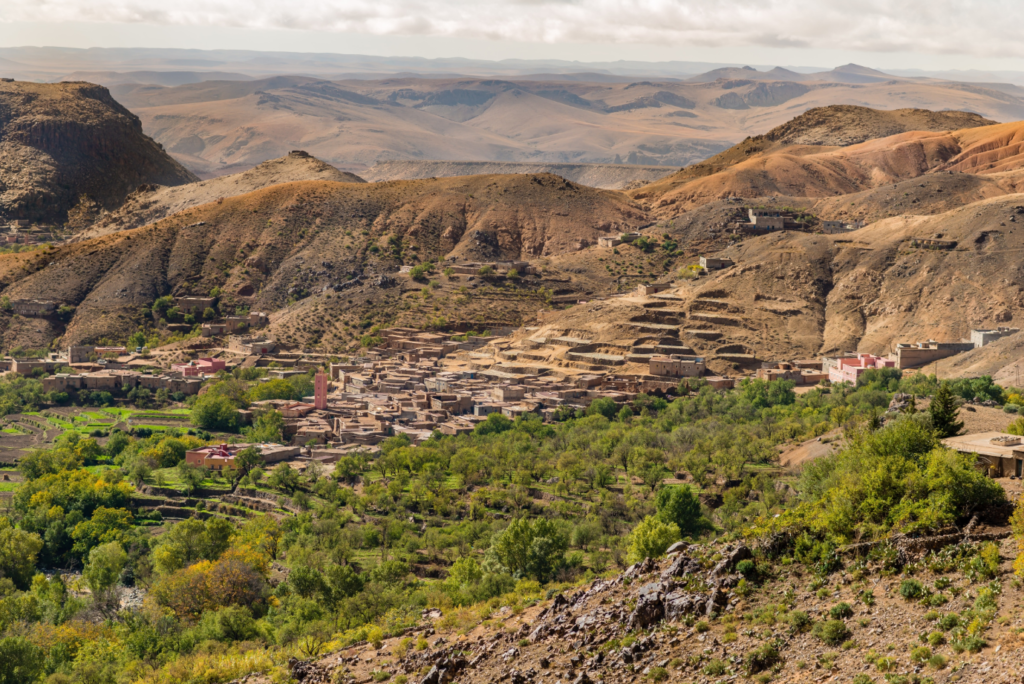
Within this biodiversity, the bald ibis (Geronticus eremita), an ugly bird like a louse, attracts the attention of ornithologists around the world. This big, stocky wading bird, about 70 cm high, with a completely bare red head (hence its name), curved beak and black plumage, had the good idea to reappear in the eyes of the world community of ornithologists after having disappeared since the 16th century! So remember that today, the feathered is the subject of all attention!
The Souss-Massa park also conceals a sort of animal park where a few survivors of the Saharan fauna – gazelles, addax and ostriches – roam peacefully without the risk of ending up in the frichti of a squadron of soldiers.
Some naturalist guides offer to explore the park and its animals on hikes lasting a few hours or even a day.
6. Erg Chebbi, as long as there are dunes…
We tell you right away, a camel ride in Erg Chebbi, a large pile of sand 27 km by 6 km located south of Erfouz, is more like a weekend at Disneyland than a real experience. Saharan.
However, there remains the magic of the dunes of Merzouga and the contact with the camels (dromedaries more precisely) even if these are more akin – given their size – to common pack animals than to the noble vessels of the desert that are the méhara (méhari in the singular) drawn up by the Tuareg.
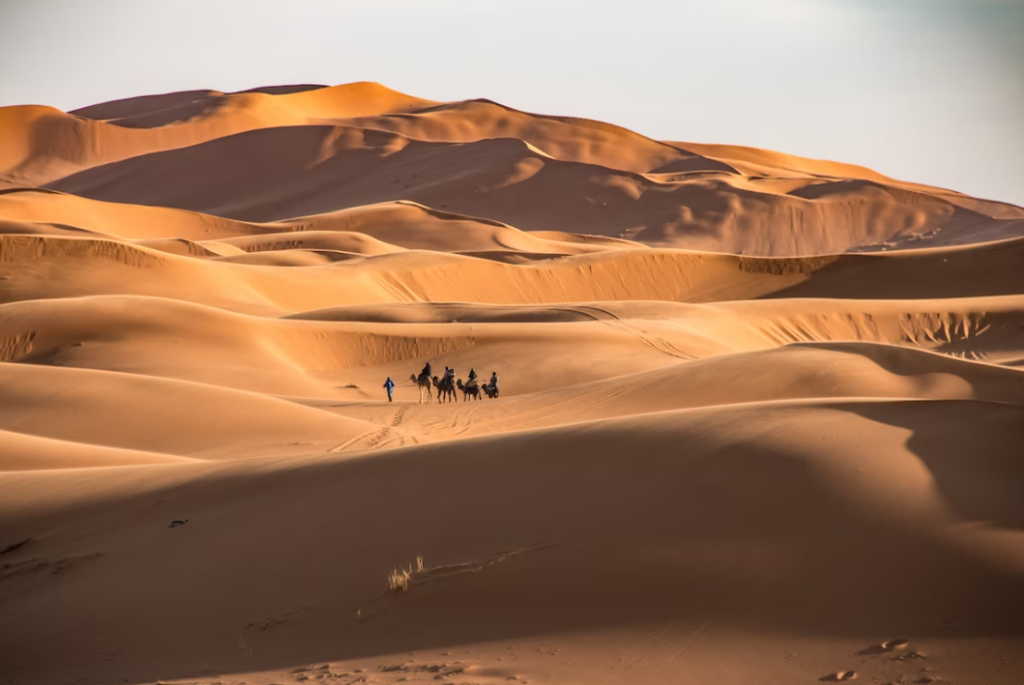
On the western flank of Erg Chebbi, between Dar Kaoua and Khemlia, the hostels are practically on top of each other (with an increase in them around the small town of Merzouga). It is from there that at the end of the day the small caravans of tourists leave in the direction of the bivouacs installed in the nearby erg.
Depending on the price, several formulas. Camel trek for 2, tight on the bump, quarter chicken tagine shared for 6, night on a soft mattress on the floor wrapped in a panther skin blanket (or Spiderman, or Tom & Jerry, it depends…) with the luxury formula, with scented dromedary just for yourself, cozy bed in a caidal tent, dry toilets, hot shower, refined cuisine and oriental folklore…
7. Jdaïd or the desert for oneself
About twenty kilometers west of Taouz, a slab of purplish sandstone located around the small village of Jdaïd conceals some rock engravings in the Libyco-Berber style. You will see a profusion of geometric signs as well as some tanks typical of Saharan representations.
Not far from there is a small isolated inn in the heart of the desert: Kasbah Itrane Sahara. This charming address born from the meeting between Mohamed (a native of Jdaïd) and Joël, both lovers of the desert, turns out to be an excellent base for exploring the region on foot or by camel. Because here, nothing to do with the traffic jams of Merzouga, the desert belongs to you!
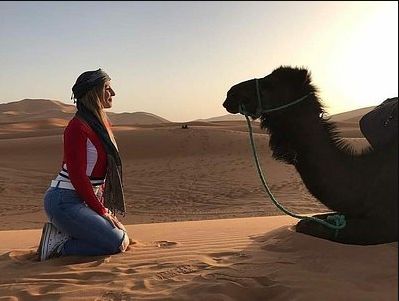
If the dunes are perhaps a little less spectacular, the impression of the desert on the other hand is really very significant, in a fairly limited perimeter, all the components of the desert itself: the reg, the erg , the mountain and the wadis. Add to that some (real) nomads and their herds of camels and the image of Épinal is almost perfect.
A few thousand years ago, when this northern part of the Sahara was still well watered and green, rhinos, giraffes, elephants, ostriches and big cats frolicked here. A potential game hunted by a semi-nomadic population who had established their villages of huts on the heights, well back from the flooding of the wadis.
From this bygone era there remain today some vestiges, tombs and traces of camp concealing here and there some stone tools, engravings, but above all the indelible mark of the past, of this “before” now gone where man lived exclusively from gathering and hunting. Moving.
The millennial kingdom of Morocco seems to know it all, and is calling you to be wiser enough to let him guide you, to one of the best days and memories that we all seek atleast once in our lifetime.
Fez
Meknes
Guelmim
DarDif.com
A team of ambitious people write about the Moroccan tourism and share the
knowledge about the beauty of Morocco.

DarDif.com
A team of ambitious people write about the Moroccan tourism and share the knowledge about the beauty of Morocco.
Join to our mailing list to get Updates and Special Deals only available via Email
Join to our mailing list to get Updates and Special Deals only available via Email
From Private Desert Odysseys to Hidden Medina Retreats
Blog
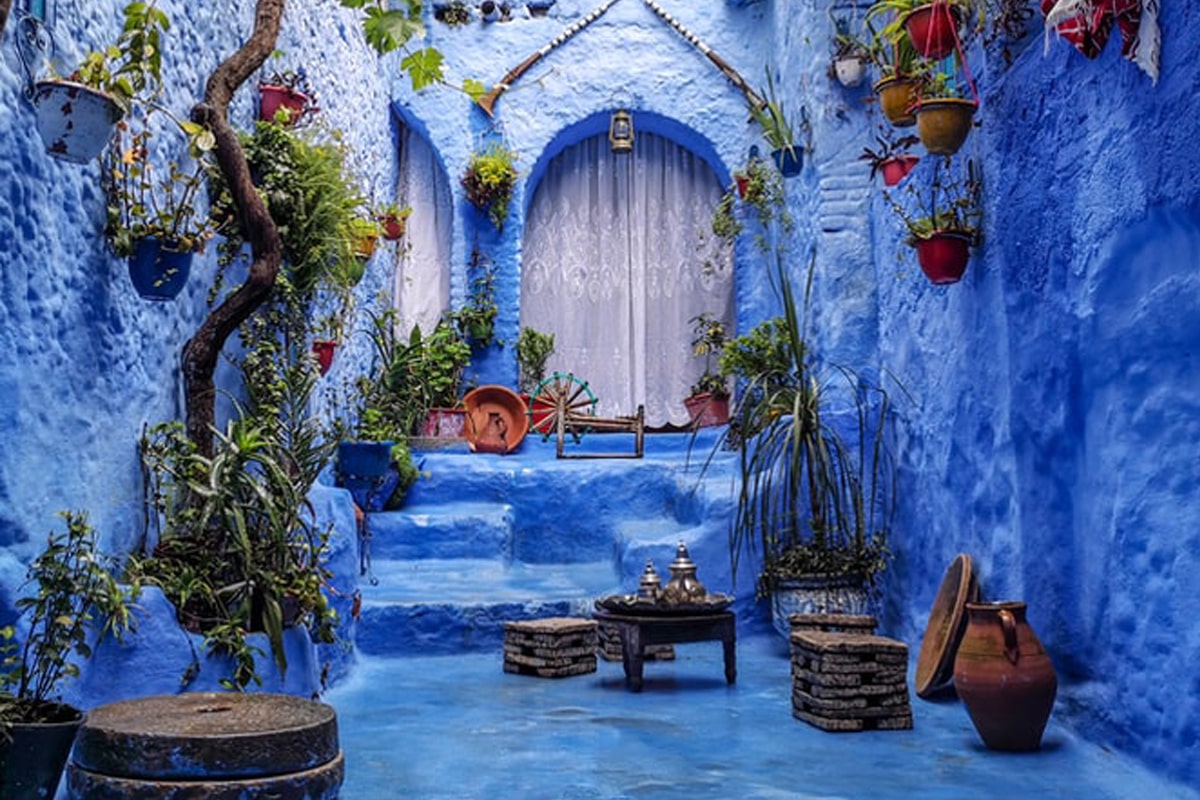
The best things to do in Chefchaouen (Underrated places)
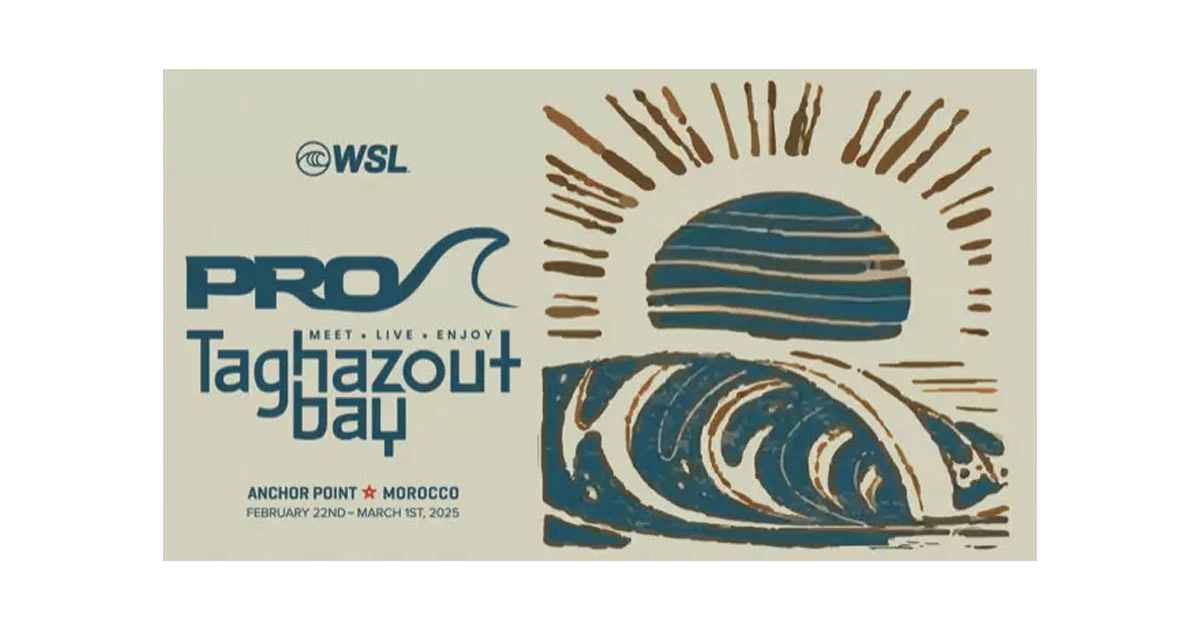
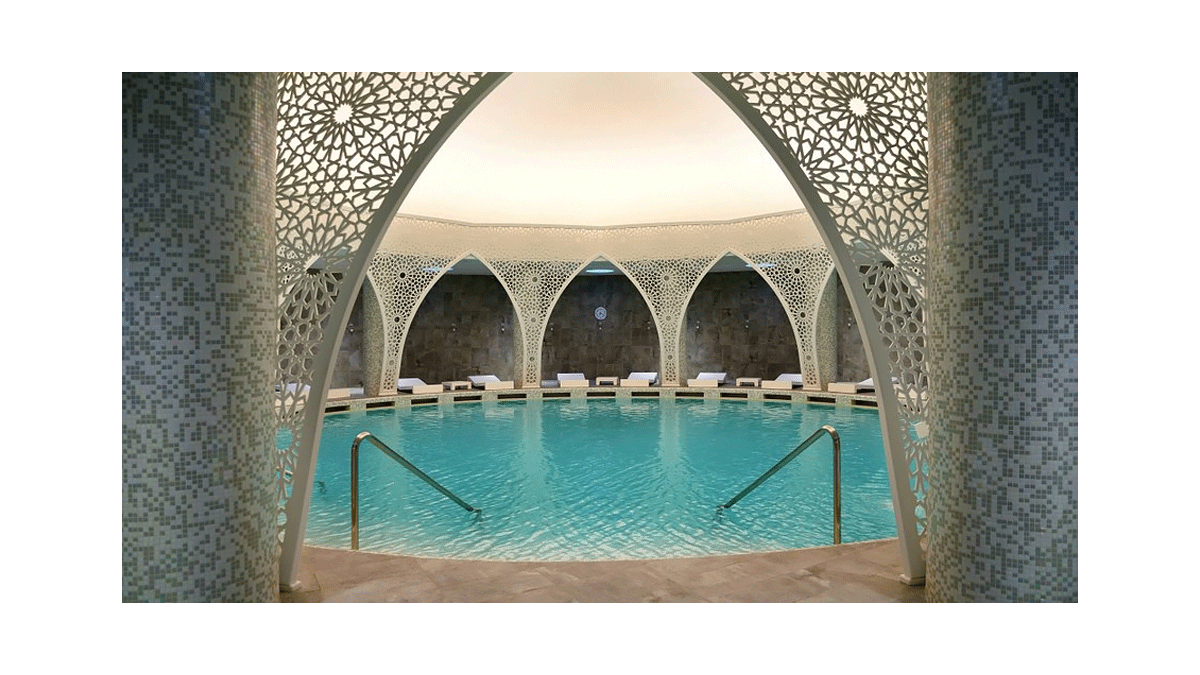
The Best Morocco’s Natural Hot Springs and Thermal Baths
From Private Desert Odysseys to Hidden Medina Retreats
Other articles

The Best Morocco’s Natural Hot Springs and Thermal Baths
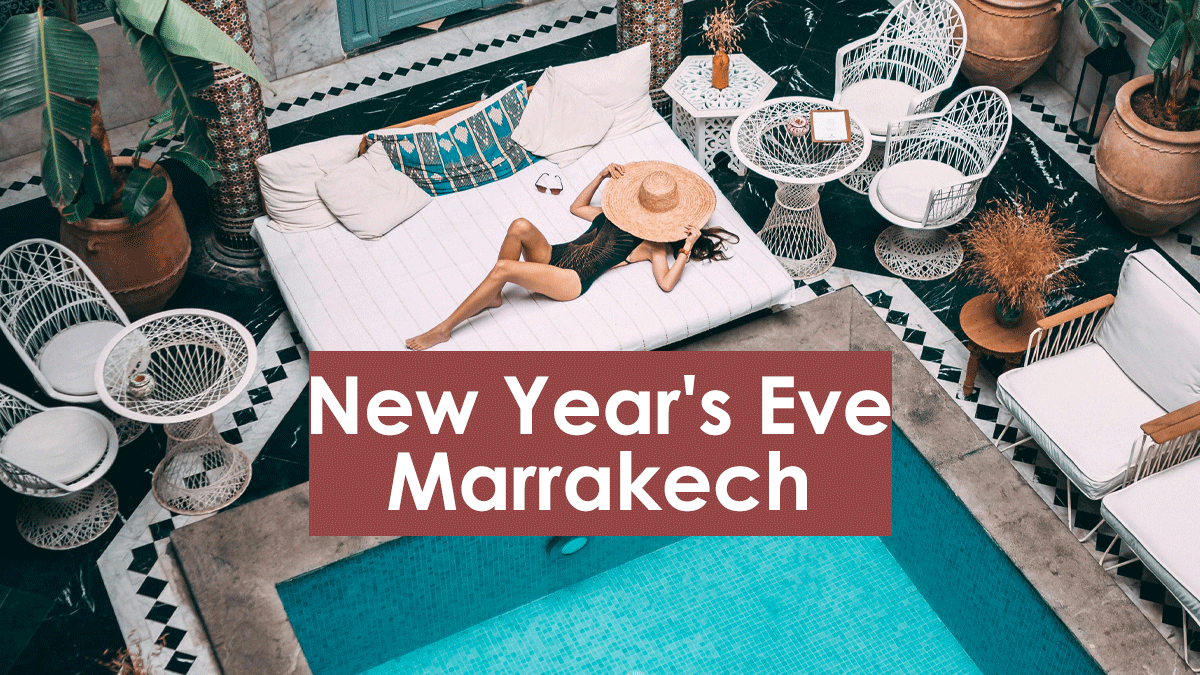
Where to Celebrate New Year’s Eve in Marrakech 2024
From Private Desert Odysseys to Hidden Medina Retreats
Ready to Write Your Morocco
Story?

The Morocco you’ve
always imagined –
designed around you.
Tell us what you love,
what you’re curious
about, what you
absolutely want
(or want to avoid).


We’ll take it from there.
No templates. No stress.
Just a journey that fits you.
From Private Desert Odysseys to Hidden Medina Retreats
Ready to Write Your Morocco Story?

The Morocco you’ve
always imagined –
designed around you.
Tell us what you love,
what you’re curious
about, what you
absolutely want
(or want to avoid).


We’ll take it from there.
No templates. No stress.
Just a journey that fits you.

